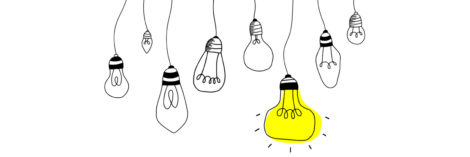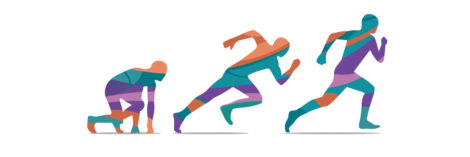Groover was thought up by three young entrepreneurs to simplify relations between artists and the media, labels and professionals in the music sector, and thus solving the promotion of artists. To this end, Romain Palmieri and his associates have conducted, and are still conducting, numerous test phases to boost their project and improve their valuable proposal permanently.
Discover this entrepreneurial and musical adventure in this new podcast.
Summary
- Chapter 1: your entrepreneurial experience in 3² points
- Chapter 2: The genesis of the business idea
- Chapter 3: Validation of the business idea
- Chapter 4: Getting started
- Chapter 5: Take-off
- Chapter 6: the future
- IntoTheMinds podcasts
The marketing idea to be remembered
It is essential to test one’s idea and improve it gradually over time and with the feedback of potential users. This is how Groover refined its business proposal, and the teams determined the business model that best adapted to the needs of the market.
Chapter 1: your entrepreneurial experience in 3² points
3 key figures
More than 160,000 song submissions, 15,000 artists on the platform, 100 artists have found their label thanks to Groover.
3 tips for future start-ups
Tip 1: Listen to your customers and your market
Tip 2: Surround yourself well (team and mentors)
Tip 3: Know how to hang on
3 essential skills needed to launch your start-up
Romain Palmieri stresses that business and technical skills are essential, however, soft skills are the most critical. The first skill needed is to have a clear and ambitious mission and vision of the entrepreneurial project. The second skill is related to communication: it is about knowing how to federate and align stakeholders. The third skill is listening and learning.
It is essential to have time to be in constant contact with the users, to meet people who have done things that can be an apprenticeship for you, therefore mentors, other entrepreneurs.

Chapter 2: The genesis of the business idea
Groover assists artists in their musical promotion with media, labels and industry professionals. The platform ensures that artists are listened to and receive feedback from music professionals, which is a crucial point and not an easy thing for artists to do. The objective is to offer artists better visibility, more qualitative visibility, based on micro-payments.
In the podcast, Romain Palmieri gives some indicators on the functioning of Groover:
- 2 euros: the amount artists pay to contact media, professionals, labels that are accessible on the platform.
- 40 euros: the average monthly basket
- 1 week: the deadline for artists to receive feedback from the professional they have contacted; if they do not receive this feedback, they will be refunded.
- 1 euro: the amount paid to the media, labels and music professionals who respond to artists on Groover.
The idea behind Groover comes from a statement made by the co-founders. Romain Palmieri, Jonas Landman and Dorian Perron (the co-founders) noticed that artists were in a permanent competition situation. More than 40,000 new tracks are released on Spotify every day. As a result, the media and labels are overwhelmed with requests. Groover’s concept aims to solve this problem by ensuring that artists are positively listened to. This listening should create added value while saving time and money for the media and professionals.
The idea came to us first of all, because we come from this ecosystem […]. We had a good understanding of the issues and complexities […]: today there is a severe problem concerning the promotion of artists and we wanted to solve it.
Chapter 3: Validation of the business idea
Romain Palmieri insists on the importance of testing his idea and collecting the opinions of potential users before the project is even launched. This is how the co-founders of Groover started their entrepreneurial adventure:
We did an entrepreneurial programme at Berkeley, California, with the idea of applying what we knew, what we had as intuition […] That’s how we started to test things, to learn.
To ensure the validity of their findings, market research techniques were used:
- Confirmation of the business idea by relatives and acquaintances active in the music industry
- Validation via telephone interviews (qualitative research) with 200 French and American artists. The qualitative research highlights a significant problem for artists: making themselves known.
- The platform was launched following these checks using a method well known to entrepreneurs: iteration, testing and adapting user feedback through quantitative strategies aimed at defining price, deadlines for returns, and so on.
We learned a lot about […] the operational issues behind the concept and the idea, and this is the right way, in the beginning, to launch a test and an MVP because it allows you to refine the sliders and position them in the right place. [For] the moment when you want to launch the first product, a little more substantial, a little more technical.
Chapter 4: Getting started
The first customers were found through a network, via private and professional acquaintances of the three co-founders of Groover.
The start-up was able to position itself on important musical events such as the Mama (festival in the centre of Paris) where the team was able to collect, once again, a lot of feedback. Also, Groover very quickly set up contact acquisition and marketing methods to publicise the platform.
The two signals that made it possible to see the market governing positively: the first signal was a quantitative one […] the number of customers was increasing organically, without investing in paid marketing, on Ads, Google or Facebook marketing; and we could also see from a qualitative point of view, when we were at events and in particular […].the Mama, which was a bit of a unifying issue, an anchoring point for us, that the feedback we got from users, be they, professionals or artists, on both sides, was extremely encouraging, immensely positive, extremely benevolent.
The difficulty mentioned by Romain Palmieri in this start-up phase is the ability to “do everything at the same time”. He explains in particular that it is complex to manage two populations of users (artists and professionals in the case of Groover):
We always need to acquire two types of population at the same time because we need one and the other and [vice-versa]. So, in fact, we are still obliged to contact one and the other […] and this with all the subjects that we also have, as entrepreneurs, which [are] the search for financing, finding people to join the adventure, building the product, all the technical subjects…

Chapter 5: Take-off
To ensure the take-off of the platform, Romain Palmieri specifies that the essential aspects are financial and human:
After having launched our product and after having started to see the first signs of traction, exceeding the first thousand, tens of thousands of euros of monthly turnover, we began to say to ourselves “well, there’s something about our product, couldn’t we create a company around this product”? Recruiting people, financing the company in a very long-term way to create a central player in the sector, which was our vision from the start.
Once again, Romain Palmieri describes the iterative process through which Groover passed. This is a critical point in the start-up, and take-off of the platform since many elements (business model, acquisition methods, communication, technical aspects, and so on) have been launched in test to be continuously adjusted.
In June 2019, Groover made the first round of financing with the fundraising of €1.3 million through private equity funds, mentors and Business Angels from the music, technology and media sectors. Romain Palmieri then specifies:
What is essential in this period is to find the right people, the right partners who will be able to support the project in the long term and who will be able to […] energise the project and make sure that the right choices are made at the right time.
Groover’s technical team, and Jonas Landman, in particular, aims to build algorithms to guide the artists so that they can address the media, labels and professionals that best suit them.
As we make an artist population interact with a media population, having a match in the encounter between the two is extremely important.
Chapter 6: The future
Groover’s objective is to become a reference in terms of promoting artists internationally. Romain Palmieri points out that the product is continuously evolving to always be in line with the needs of artists.
Our ambition is to be a central player in services to artists in Europe and North America. Our mission and this is what has been driving us since the beginning, is to give artists the power to make their music known and become an accelerator for their success in a way that is both efficient, caring and transparent.
In the long term, Groover’s objective is to be a reference in about twenty countries in Europe and North America, to multiply its customer base, and to reach the symbolic number of 1 million registered artists.
A podcast to help you develop your start-up
In 2020 we are changing the format of our podcasts. The aim is to help you develop your start-up by providing you with relevant information on specific topics.
Our podcasts are now divided into chapters of +/- 3 minutes. Each chapter is dedicated to a specific theme or development phase. You can therefore listen to the entire podcast or choose to listen to only part of it by directly selecting the part that interests you the most.
Illustration images: shutterstock
Posted in Entrepreneurship.




